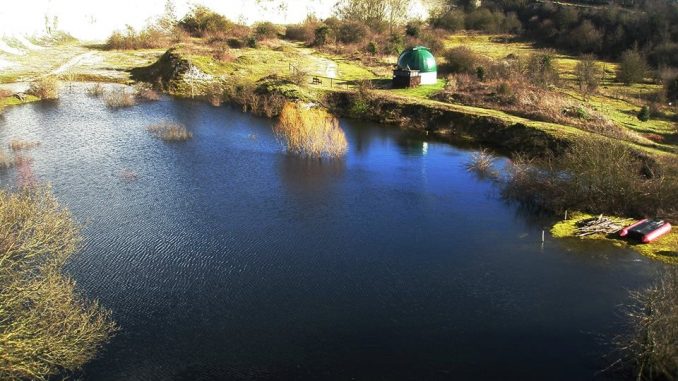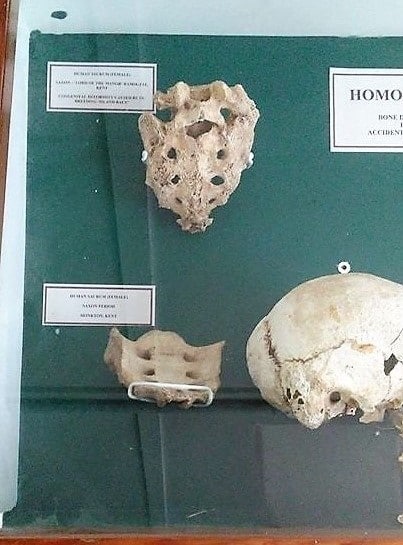
There is a human pelvis hanging in the Monkton Nature Reserve reception building.
The skeleton piece is known as the Thanet Pelvis and has a fascinating history, passed on to the Reserve by resident Ron Stillwell.
According to the tale many years ago, on the south side of Reserve, at No Man’s Land, a human pelvis was discovered after being uncovered by rabbits.

Twenty-five police rushed to the Reserve, along with a coroner. The coroner declared the pelvis was in fact 2,000 years old and was from a female.
The police quickly lost interest but archaeologists were excited by the find. It was suspected that a villager from Monkton had dug the body up in their garden and didn’t want the hassle of an investigation so dumped it at the Reserve! At that time the Reserve used to be open access.
The bone piece is known as a ‘Thanet pelvis’.

A Thanet pelvis shows deformities, compared to normal pelvis ‘displayed below it at Monkton.
The vertebrate, which is normally detached from the pelvis, has fused on one side. This means that by her 20s, this lady would have walked heavily bent to one side and would have formed a painful limp.
The Thanet pelvis was common because as an island split from the mainland by the Wantsum Channel, inbreeding was inevitable and the deformities arose quickly.
The Thanet Pelvis is not the only unusual human discovery for the isle. When work was being carried out on the Thanet Earth site in 2008 a 4,000-year-old skeleton was unearthed – clutching a pint of beer.

The Bronze Age man’s body was found in shallow grave holding a type of beer mug.
Tests on beakers from other sites suggested Bronze Age man brewed beer from grain.

